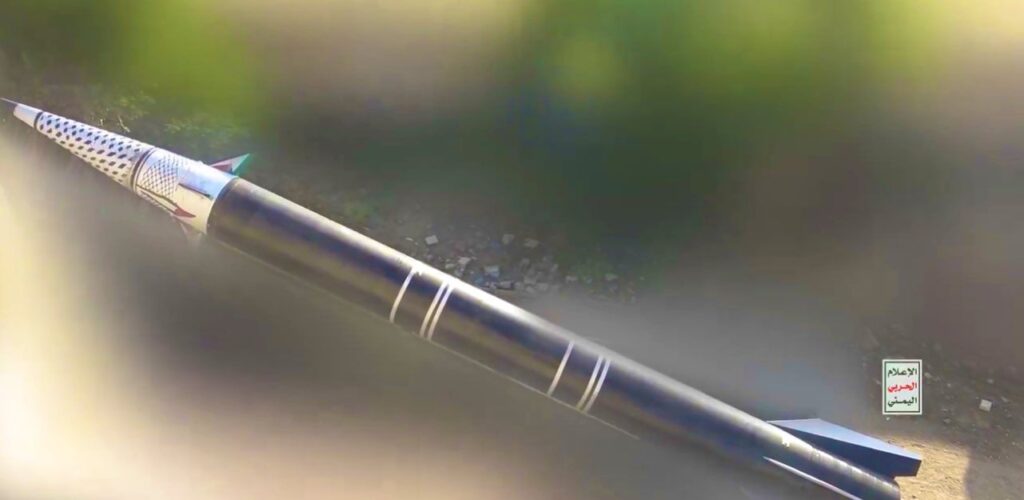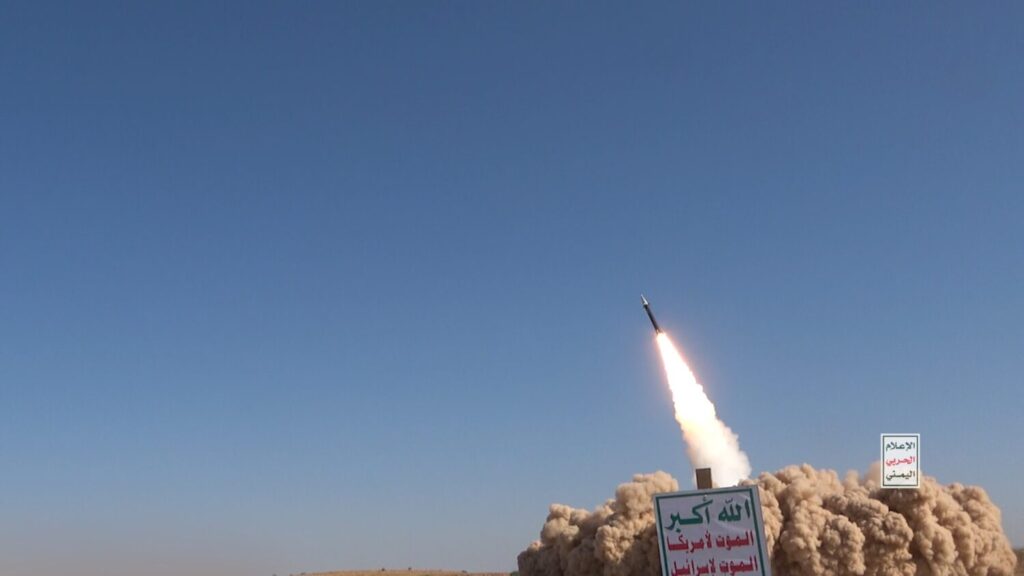Houthis Targeted Tel Aviv With New ‘Palestine-2’ Hypersonic Ballistic Missile
Several weeks before Israel began it ground operations in Lebanon and Iran launched its major missile assault on Israel last night, the Iranian-backed Houthi movement in Yemen announced, on 15 September, that it had carried out a ‘qualified military operation’ using an allegedly new surface-to-surface missile, the ‘Palestine-2’, against IDF units in central Israel.
Houthi military spokesman Brigadier General Yahya Saree said that the attack, in retaliation for ‘Zionist aggression’ against Palestinians in the Gaza Strip, was carried out with a ‘new hypersonic ballistic missile’ called Palestine 2, fired from the north of ‘the country, targeting the Jaffa ‘area south of Tel Aviv. Saree also claimed that the new hypersonic ballistic missile, which covered a distance of 2,040 kilometers in 11 and a half minutes, was not intercepted by Israeli defense systems and completed the operation by reaching its target.
The Palestine-2 is an improved version of the Palestine missile, unveiled recently and claimed to be locally produced. According to the Houthis, this new two-stage, solid-fuelled missile has a range of 2,150 km and a speed of up to Mach 16. Other claims about the Palestine-2 include that it is highly maneuverable and can evade even the latest air defense systems.

Given that the Yemeni rebels lack the technological equipment and engineering skills to produce a ballistic missile with the characteristics they claim, it would not be a stretch to conclude that they have illegally acquired these systems from their closest ally, Iran. However, Iranian President Massoud Pezeshkian said he had not sent hypersonic missiles to the Houthis, adding: “It takes a person a week to travel to Yemen (from Iran); how could this missile have gotten there? We don’t have such missiles to provide to Yemen.”

The Israel Defence Forces (IDF) said in a statement on the Houthi allegations that the surface-to-surface missile fired from Yemen into Israeli territory was detected at 06:21 local time and that the Arrow and Iron Dome air defense systems were immediately activated to intercept the missile. The IDF revealed that ‘initial inquiry suggests the missile most likely fractured in mid-air [after] ‘any interception attempts’ but did not destroy it, adding that ‘the entire situation is under examination.”
Following the incident, local media reported a fire in the Ben Shemen forest, 16 kilometers southeast of Tel Aviv’s Ben Gurion Airport, and a damaged railway station near Modiin. No casualties were reported, but nine people were lightly injured. It is currently claimed that the damage to the railway station was caused by Israeli interceptor missiles, while fragments of a missile fired from Yemen caused the fire in the forest.
At a cabinet meeting on the 15 September, Prime Minister Netanyahu addressed the recent missile attack from Yemen, claiming that “the Houthis launched a surface-to-surface missile into our Terri”ory.” He warned that any attempt to harm Israel would result in significant consequences. “Those in need of a reminder,” he added, “can look to the port of Al Hudaydah,” referring to the Yemeni city” hit by Isra” li bombings in July. The operation was carried out in response to an attack by Houthi drones on Tel Aviv that killed an Israeli civilian.
Yemeni rebels, also known as Ansarullah, had regularly attacked Israel in support of Palestine since October 7, 2023, when the Izz ad-Din al-Qassam Brigades, the armed wing of Hamas, launched a major offensive across Israel under the name Operation Aqsa Flood, but this was the first long-range attack on the center of the country. As the anniversary of the operation approached, senior Houthi officials warned Israel of further retaliation, citing this attack as an example, and said future operations would be on a much larger scale.
Over the 28 September, the Houthi launched another Palestine-2, allegedly targeting Ben Gurion Airport, it too was intercepted by Israel’s integrated air defens es. On Sunday 29 September, as the Israeli air forces began strikes in Lebanon, ahead of ground operations, at the same time dozens of Israeli jets struck the Yemeni city of Hudaydah. Targets are believed to have included fuel facilities, power plants and docks at the port. The operation took place more than 2,000km from Israeli airspace, highlighting Israel’s ability to project it’s airpower.

